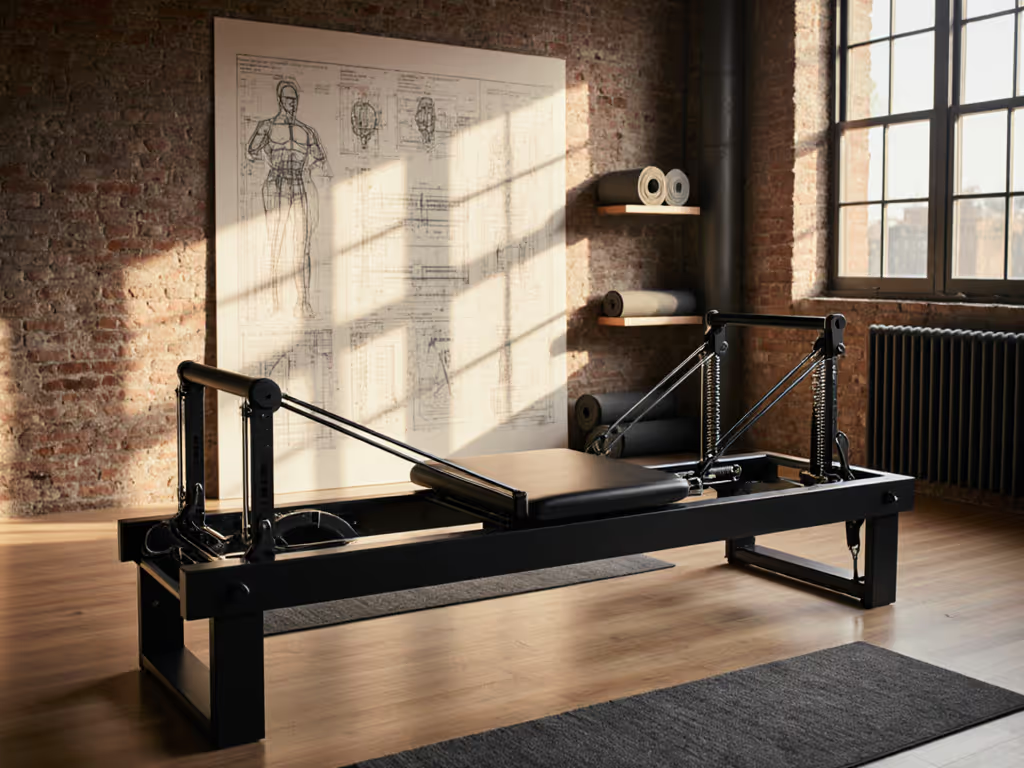
Pilates Resistance Science: Quiet Spring Mechanics Explained
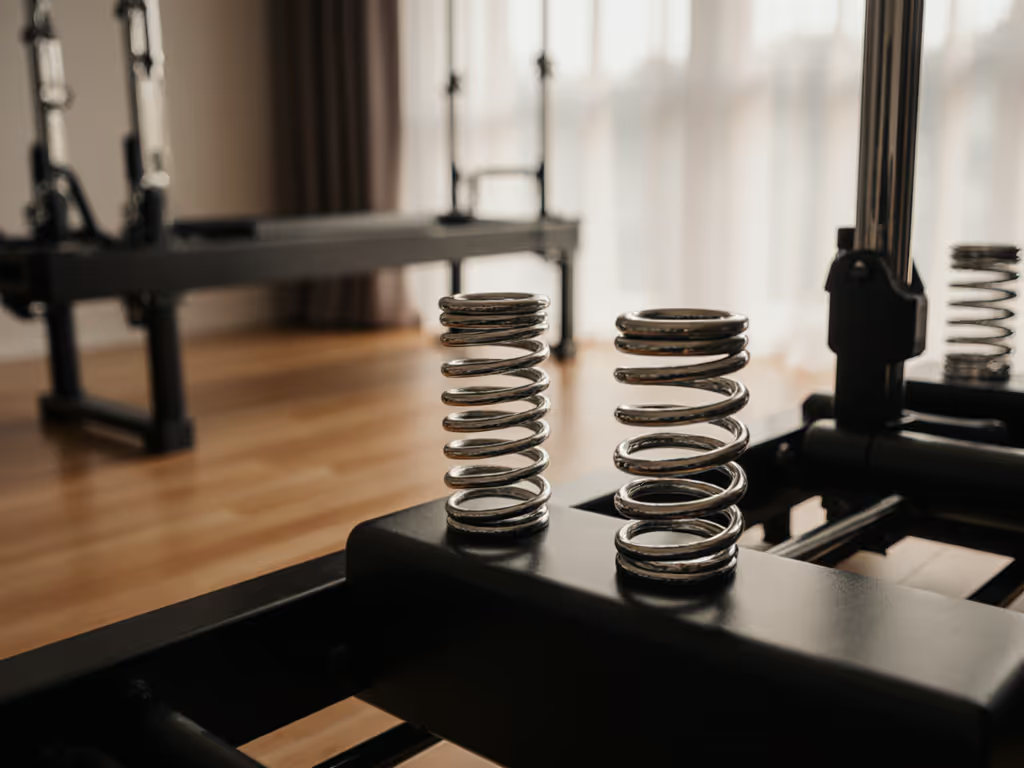
As a beginner exploring Pilates equipment for small spaces, understanding pilates resistance science is crucial, not just for building strength, but for creating a practice that won't disturb neighbors. When you grasp how pilates springs work, you unlock the ability to build a setup that's both effective and quiet enough for apartment living. This isn't about advanced physics (it's about practical knowledge that helps you establish a sustainable routine without noise anxiety).
FAQ Deep Dive: Pilates Spring Mechanics for Quiet Practice
How do Pilates springs actually create resistance?
Pilates springs follow the same basic principle as any mechanical spring: the more you stretch them, the harder they pull back. This relationship is explained by Hooke's Law (F=kx), where force equals the spring's constant multiplied by distance stretched. But you don't need to calculate physics equations to understand the practical effect.
When you press the carriage out during footwork, you're stretching springs. At 2 inches of extension with a typical spring, you might feel 3 pounds of resistance. At 12 inches, that same spring delivers 18 pounds, without any moving parts creating unnecessary noise. This linear progression (resistance increases proportionally with stretch) creates predictable tension that builds strength through controlled movement.
Unlike weighted systems that can clang or drop, spring resistance provides smooth, quiet progression that is gentler on both your joints and your building's structure. This is why proper spring mechanics are foundational to pilates set equipment designed for considerate urban living.
Why does spring tension matter for quiet practice?
Many beginners mistakenly think heavier springs automatically mean louder equipment. Actually, the opposite is often true. Well-matched spring tension reduces noise because it prevents jerky movements that cause carriage slams or uncontrolled spring chatter.
Consider what happens with springs too heavy for your strength:
- You compensate with momentum rather than control
- The carriage slams back when you release
- Springs vibrate against metal carriages
- Your body tenses, creating joint sounds
On the other hand, properly calibrated springs allow for smooth, consistent movement where the only sound is your breathing. This is where understanding spring tension in practical terms helps you select equipment that supports quiet adherence to your practice.
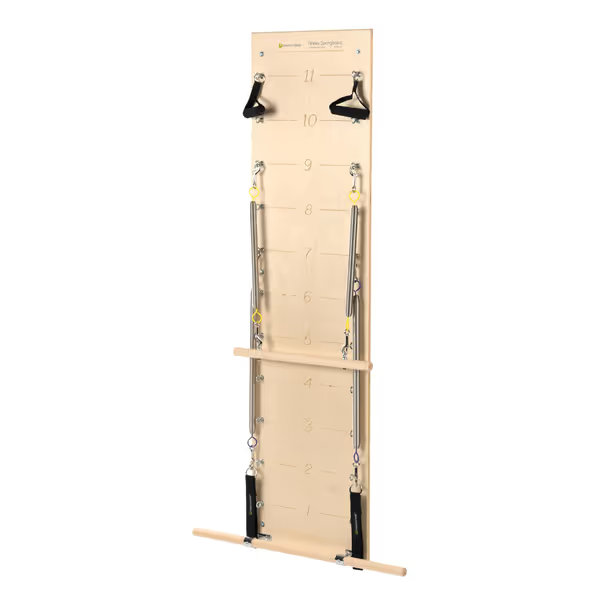
Balanced Body Pilates Springboard with Push-Through Bar
Do springs really wear out and get quieter over time?
Many clients express concern about springs "wearing out" and becoming quieter (a seemingly positive development for apartment dwellers). But according to mechanical engineering principles, this is highly unlikely under normal use.
Quality springs can withstand millions of cycles without significant change in resistance. If your springs suddenly feel lighter, it's typically one of these issues:
- Incorrect spring attachment (snaps not fully engaged)
- Carriage wheel wear creating friction points
- Accumulated dust/dirt in spring coils dampening movement
True spring fatigue happens only after extreme over-extension (far beyond normal Pilates use). When properly maintained, your springs' resistance remains consistent for years, which means your quiet practice stays reliably quiet without unexpected changes in mechanics.
How should beginners approach spring selection for quiet results?
Starting with lighter springs isn't just about matching your strength (it is a strategic noise-reduction technique). When you begin with what feels too easy, you eliminate the instinctive tension that creates unnecessary sound.
My recommended progression for quiet practice:
- Start with just one light spring (purple/long) for all exercises
- Focus on smooth, quiet transitions between movements
- Add springs only when you can maintain consistent breathing
- Choose exercises with shorter range of motion initially
This approach addresses the common issue I encountered with a client who held her breath during noisy footwork (her body's stress response actually made her movements louder). When we dialed back to lighter springs and focused on quiet cueing, her practice became both quieter and more effective.
How do different body types affect spring mechanics and noise?
Your height, weight, and proportions interact with spring tension in ways that impact noise levels. Taller practitioners often need heavier springs to achieve the same resistance at full extension, while shorter users might find standard springs too intense at minimum extension.
Consider these adjustments for quiet mechanics:
- For taller users: Prioritize equipment with multiple spring attachment points to vary leverage
- For heavier users: Look for reformers with wider carriages that distribute weight evenly
- For petite users: Choose systems with quarter-strength springs for finer tension control
This understanding of pilates biomechanics ensures your equipment matches your body's natural mechanics rather than fighting them, which eliminates the grunting, straining, and jerky movements that create noise complaints.
What's the quietest spring configuration for apartment living?
"Comfort is quiet, and quiet is compliance with your goals."
Based on years of helping urban practitioners, I've found these configurations minimize noise while maintaining effectiveness:
- Floor protection: 3/4" rubber mat + 1/4" neoprene pad (reduces vibration transmission)
- Spring choices: Even tension springs (avoid mixing heavy and light)
- Spring covers: Neoprene sleeves on all springs (standard with many quality systems)
- Lubrication: Silicone spray on carriage rails (reduces friction noise)
The most overlooked factor? Spring orientation. Springs hanging vertically create less vibration than diagonal configurations. This small adjustment in your pilates set equipment setup can make the difference between "I hear something" and complete silence from downstairs neighbors. For ongoing care to preserve low noise, follow our reformer maintenance guide.
How does spring mechanics impact different types of Pilates equipment?
Understanding how different resistance types compare helps you choose equipment that fits your noise-sensitive space:
| Equipment Type | Spring Mechanics | Noise Considerations |
|---|---|---|
| Reformer | Multi-spring system with variable attachment points | Look for systems with spring covers and smooth glide technology |
| Springboard | Wall-mounted with 20+ attachment points | Eliminates carriage movement noise entirely |
| Cadillac | Complex spring arrays with multiple directions | Requires careful spring selection to minimize resonance |
| Chair | Single spring with lever mechanics | Typically quietest option for small spaces |
For true quiet practice, the springboard offers unique advantages (its vertical spring orientation creates minimal vibration transmission to floors). As one micro-studio owner in a Boston brownstone discovered, this configuration allowed her to offer noon classes without complaints from the law office below.
Building Your Quiet Practice Foundation
The science of Pilates springs isn't just about resistance (it is about creating a practice environment where you can focus without distraction or anxiety). When your equipment moves as quietly as your breathing, you've reached that sweet spot where pilates resistance science supports your wellness goals rather than competing with them.
Understanding these mechanics puts you in control. You're no longer guessing why your practice creates noise, you are making informed choices that honor both your fitness journey and your shared living space.
Related Articles

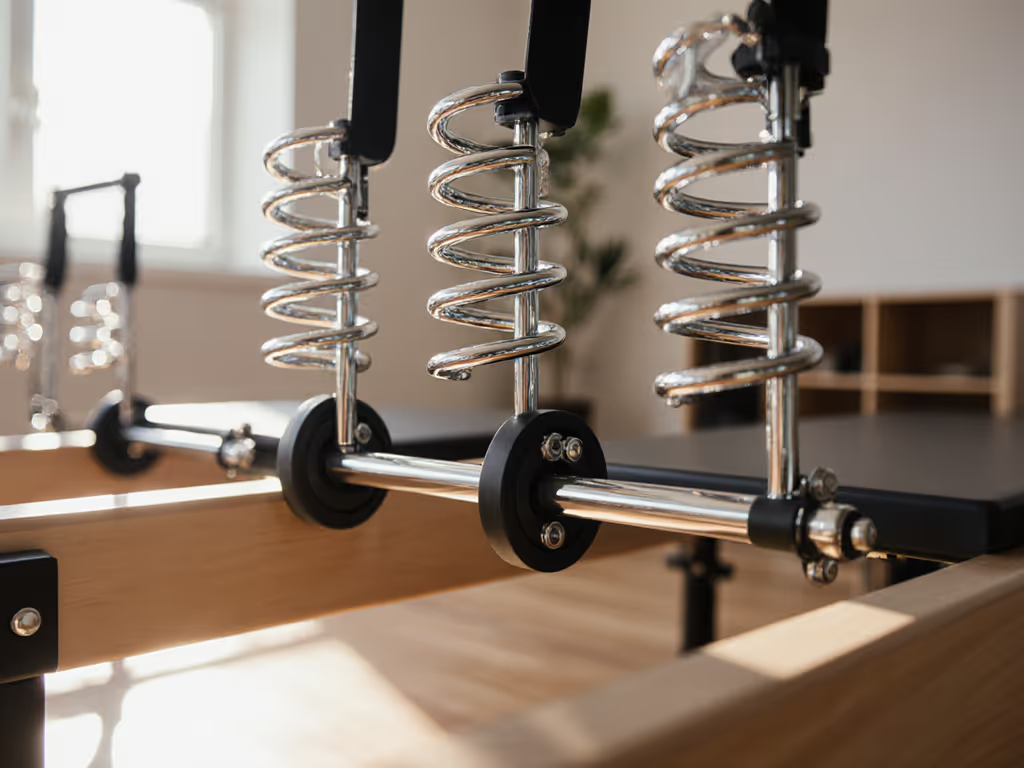
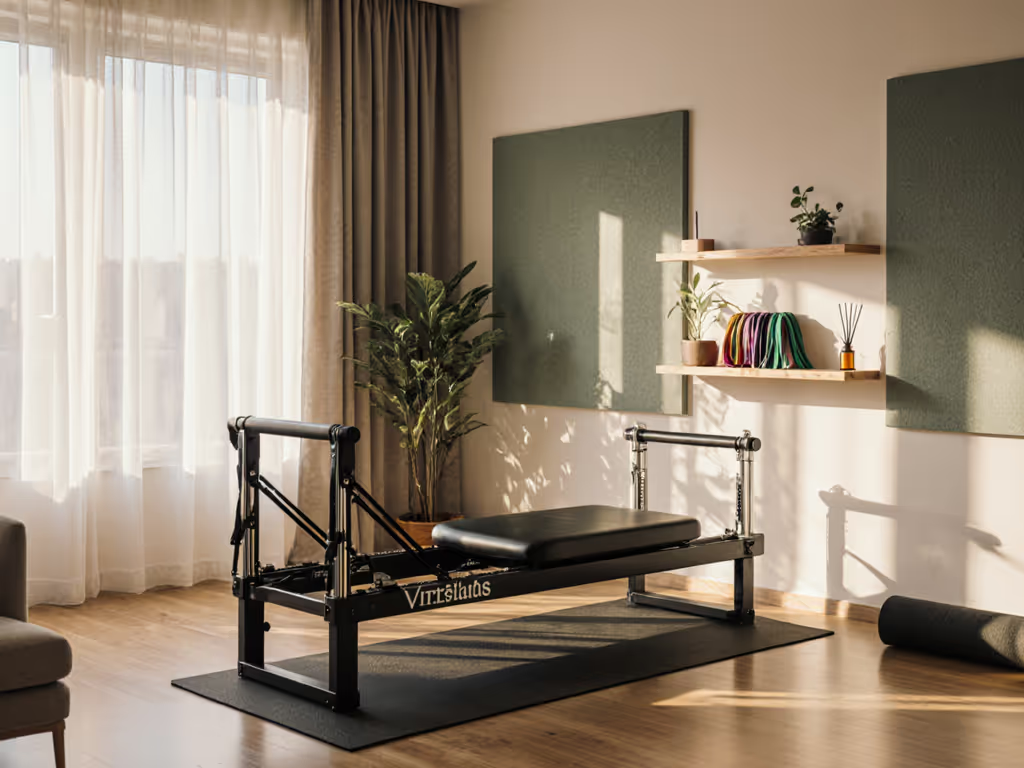
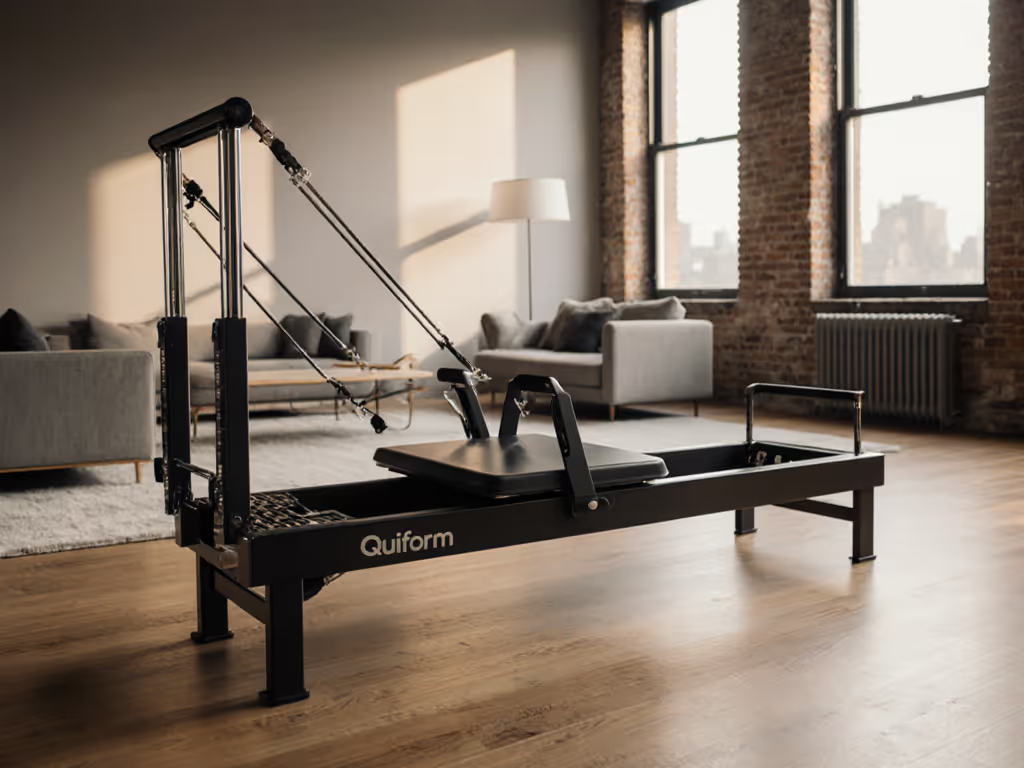
Pilates Apparatus Evolution: Space-Smart Silent Solutions
Modern, vibration-damped Pilates equipment can deliver studio-grade results in small, shared spaces. Prioritize verified dB levels on your floor type, strong vibration isolation, and fast reset scripts to prevent neighbor complaints and keep sessions on schedule.
